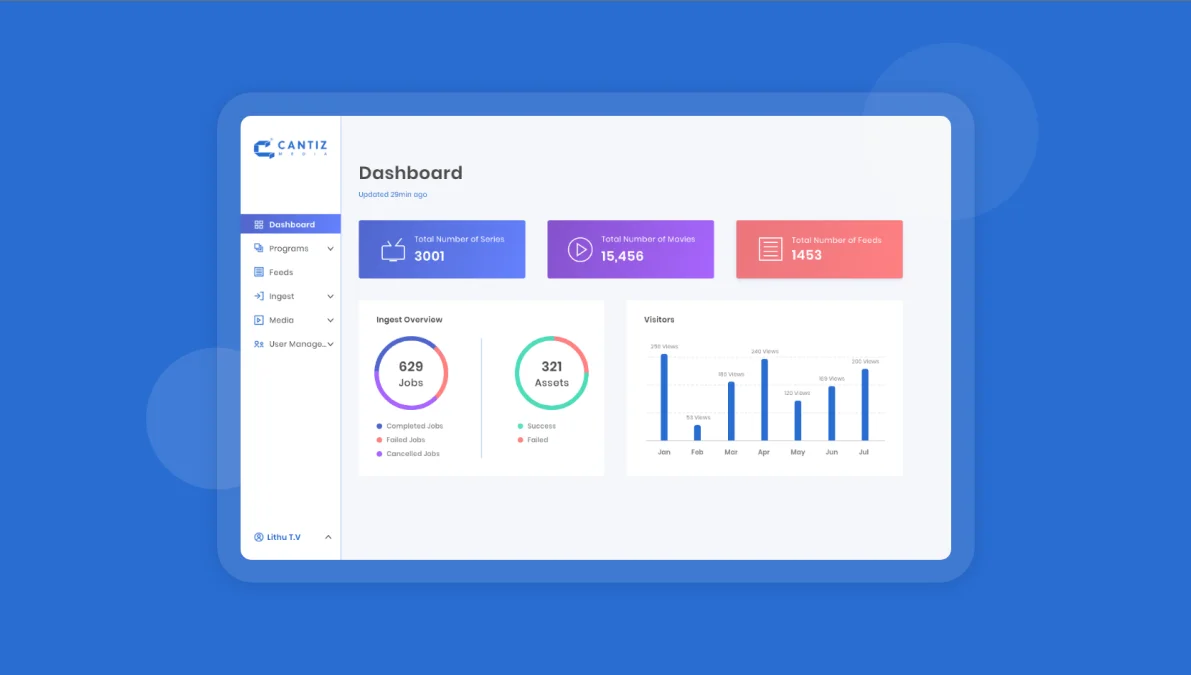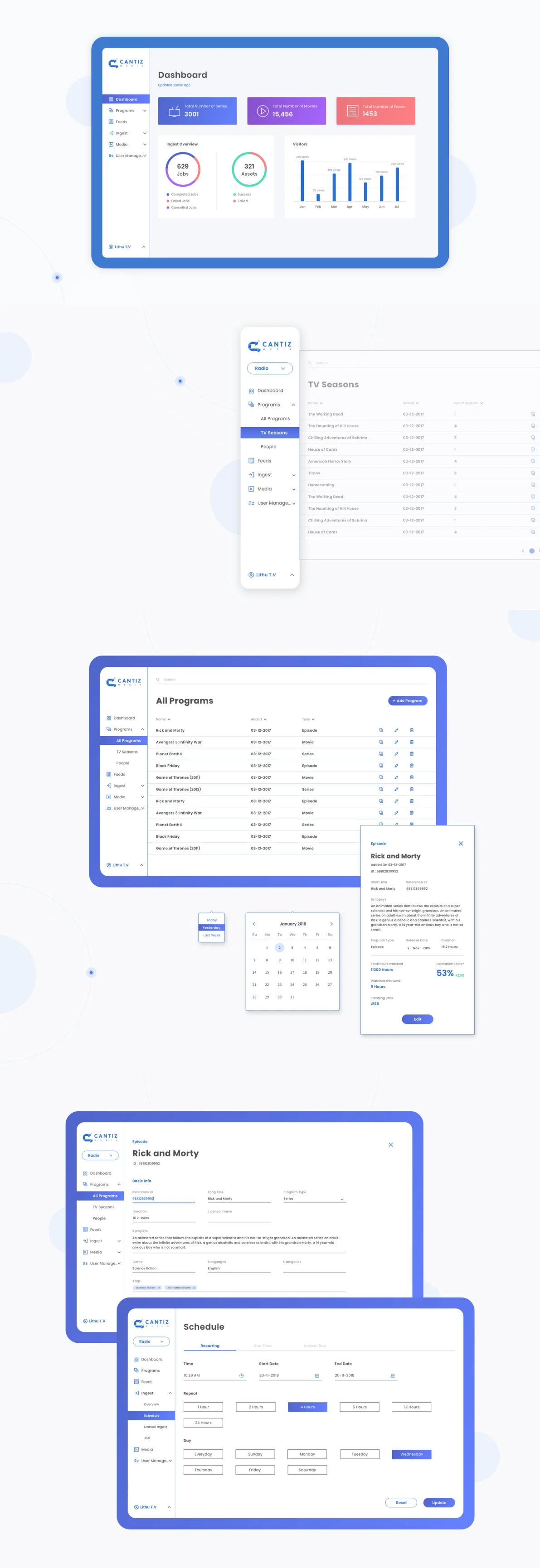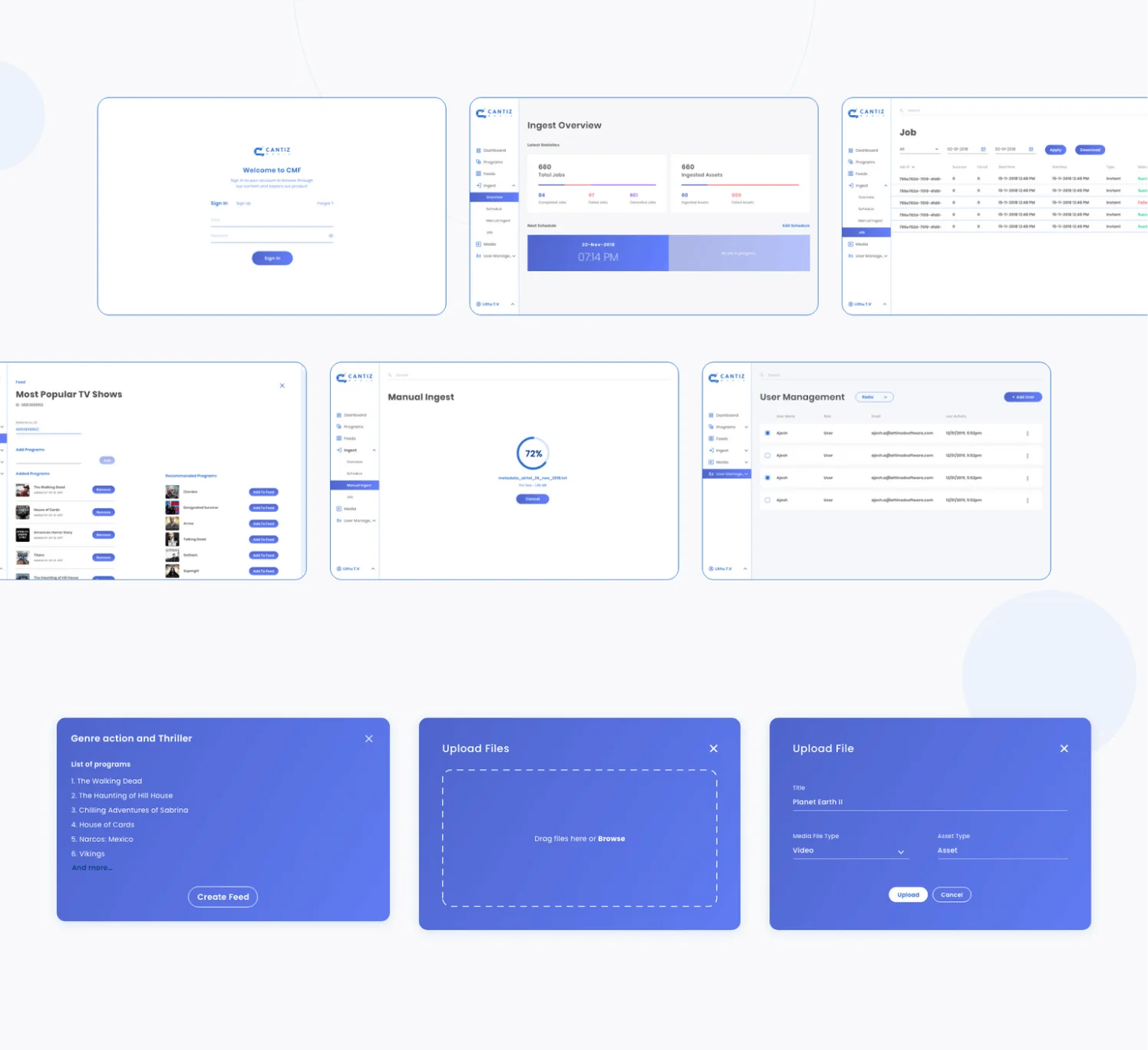Cantiz CMS
Solution for streamlining content distribution
Role
Lead Product Designer
Tools Used
Adobe XD, Adobe Illustrator
Year
2019

Problem
Cantiz Media’s in‑house TV app lacked a centralized way to organize, secure, and distribute its
growing
library of video content. Content owners juggled multiple tools, manual metadata entry was
error‑prone,
ingestion pipelines were slow, and access controls were inconsistent—leading to bottlenecks,
security
risks, and a frustrating user experience.
Research
- Stakeholder Interviews: We spoke with content producers, IT administrators, and marketing teams to map existing workflows, pain points, and “wish‑list” features.
- Competitive Analysis: We benchmarked leading CMS platforms to understand best practices in dashboard design, metadata schema, and ingestion speed.
- Technical Audit: We evaluated Cantiz’s backend stack, network constraints, and security requirements to ensure seamless integration with existing systems.

Strategy
1. Define Clear Objectives
- Create an at‑a‑glance dashboard that surfaces key metrics and recent uploads.
- Simplify navigation so even non‑technical users can find, tag, and schedule videos in three clicks or fewer.
- Introduce rich, customizable metadata fields (genre, rights, geo‑restrictions) for precise content discovery.
- Optimize the ingest workflow to support batch uploading, transcoding, and automatic quality checks.
- Implement granular user roles and permissions to safeguard content and streamline approval processes.
2. Prioritize Incremental Delivery
- Break the project into sprints: MVP dashboard and ingest pipeline, then metadata and user management, followed by advanced scheduling.
- Incorporate user feedback at each milestone to validate feature design and identify high‑impact refinements.
Design Phase
1. Wireframing & Prototyping
- Sketched low‑fidelity wireframes for the dashboard and content library; refined clickable prototypes in AdobeXD.
- Iterated on navigation patterns (side menu vs. top bar) based on click‑through tests.
2. UI Components & Modular Architecture
- Developed a library of reusable components for cards, tables, and form elements—ensuring consistency and speeding up design and development.
- Designed metadata forms as dynamic, schema‑driven modules so new fields could be added without code changes.
3. Usability Testing
- Conducted remote sessions with 10 content owners to validate ease of tagging, uploading, and scheduling.
- Collected qualitative feedback and measured task completion times to drive successive refinements.

Key Takeaways
Iterative Design Process
- Continual user feedback loops empower teams to catch issues early and deliver features that truly matter.
Modular, Scalable Architecture
- Designing UI components and data schemas as decoupled modules prepares the CMS to evolve with future needs.
Rigorous Usability Testing
- Validating designs with real users uncovers hidden pain points and ensures the final product feels intuitive.
Conclusion
By centering the project on user needs, modular design, and continuous testing, the Cantiz CMS
emerged
as a powerful, secure, and user‑friendly platform. Content owners now enjoy a single,
streamlined
interface for managing, tagging, and distributing video content—accelerating workflows,
tightening
security, and setting the stage for future growth and new features.




